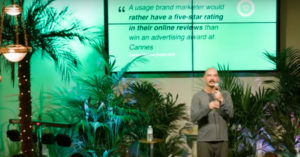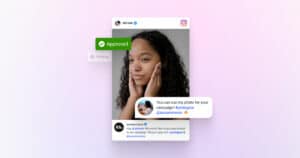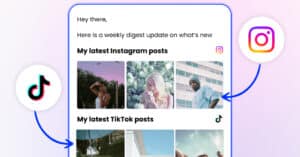UGC stands for “User Generated Content.” It refers to content—videos, photos, text, reviews, etc.—created by users (or the general public) rather than professional content creators or brands. UGC has become increasingly prevalent with the rise of social media platforms like Facebook, Instagram, Twitter, YouTube, and TikTok.
UGC Meaning?
User-Generated Content (UGC) encompasses content crafted by customers or users of a service or product rather than the originating brand or company. This includes a diverse range, from reviews and ratings to snapshots, videos, and various social media interactions.
UGC is an effective marketing strategy since it lets companies harness the influence of personal recommendations, fostering trust among potential customers. When consumers witness actual users discussing their experiences with a product or service, they tend to have more confidence in the brand and are swayed by those endorsements. Making UGC marketing one of the most powerful marketing tools out there.
UGC boosts interaction and builds a community feeling around a brand. By promoting content made by users, brands demonstrate that they appreciate their customers’ views and stories, forging a stronger bond with their audience.
However, brands need to be careful with UGC, being open about its use in promotions. Respecting customer privacy is crucial, and brands should have plans in place to manage unsuitable content and address any issues or feedback from customers.
What are the types of UGC?
User-Generated Content isn’t limited to just a photo or a tweet; its scope is diverse and expansive. Depending on the platform and the audience, UGC takes on various forms, each with its own unique flavor and influence.
Let’s take a closer look at the different forms UGC can take:
Social Media Photos and Videos
These visual content pieces users share on platforms like Instagram, Facebook, and TikTok. They capture real-life moments, experiences, or reactions involving a brand’s products or services, making them relatable and authentic.
Customer Interviews and Case Studies
Detailed accounts where customers discuss their experiences with a brand or product. Case studies, in particular, provide a structured analysis of how a product or service solved a specific problem for the customer, adding credibility to the brand’s claims.
Recommendations in Tweets, Groups, or Forums
Users often share their favorite products or positive experiences on platforms like Twitter, Facebook Groups, or specialized forums. These organic mentions serve as unsolicited endorsements, showcasing genuine appreciation or trust in a brand.
Customer Reviews, Testimonials, and Ratings
Feedback mechanisms on e-commerce sites or platforms like Yelp and TripAdvisor. They allow customers to rate their satisfaction and detail their experiences. Testimonials, often highlighted by brands, are positive reviews that vouch for the brand’s quality or service.
Blog Posts or Product Reviews by Experts
In-depth analysis or discussions about a product, service, or topic related to a brand, written by industry experts or influential bloggers. These provide an authoritative perspective, and their endorsements can heavily sway potential customers.
Why use UGC?
User-Generated Content (UGC) has become a cornerstone in the digital marketing landscape, which is why 93% of marketers say that content created by consumers performed better than branded content.
Here’s why businesses are increasingly integrating UGC into their marketing campaigns:
Authenticity and Trust
UGC offers a genuine look into real customers’ experiences, which can be more trustworthy than brand-created advertisements. When potential customers see content from their peers, they are more inclined to believe and trust the brand. . To maximize its impact, brands should consider embedding UGC directly onto their websites.
Boosts Engagement
UGC encourages active participation from the audience. Sharing and commenting on user-created content can lead to increased interaction on social media platforms and websites, keeping the brand more connected with its community.
Cost-effective Marketing
Sourcing content from users can often be more affordable than producing professional advertisements. While there are still costs associated with promoting and managing UGC, it can provide a valuable return on investment, especially when content goes viral.
SEO and Website Traffic
UGC can enhance a brand’s search engine visibility, especially in the form of reviews and testimonials. Positive reviews can boost a brand’s credibility and organic search ranking, leading to more website traffic.
Builds Community and Loyalty
Brands can nurture a sense of community by valuing and showcasing customer content. This acknowledgment can lead to stronger customer loyalty, as users feel seen and appreciated by the brand they support.












